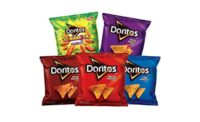New technologies like 3D printed food, artificial intelligence, and nanotechnology, all promise to create exciting opportunities in the food sector. But the time to start preparing for any potential safety concerns is before they become prevalent.
A new report from the Food and Agriculture Organization of the United Nations details some of the changing food trends on the horizon and how the food industry can prepare for them.
The report — Thinking about the future of food safety - A foresight report — maps out some of the most important emerging issues in food and agriculture with a focus on food safety implications.
“New and emerging technologies in food production, processing and packaging are providing better tools for improving traceability, detecting contaminants in food and for investigating outbreaks,” the report said.
While the report covers a range of topics, the focus on new technologies seems especially relevant to the confectionery industry.
Cutting edge innovations range from smart packaging that extends the shelf-life of food products, to blockchain technology that ensures food can be traced along supply chains, and 3D printers that produce sweets.
“A veritable technological revolution is transforming our agrifood systems, helping us produce more with less,” the report states. “Technological innovations, such as Blockchain, and Artificial Intelligence, among others, can be transformative for food safety, and in turn for agrifood systems.”
However, the industry and stakeholders need to be aware of things like basic infrastructure needs, regulatory framework and enforcement procedures, as well as better data protection and governance need to be put in place.
Rapid advances in technology often outpace the development of appropriate regulations needed to provide oversight. A lot of these advancements will allow companies to collect and store large amounts of data from a wide variety of sources. While that has a lot of potential upsides, it also comes with real trust and transparency concerns regarding data rights, privacy, sharing and may provide opportunities for misuse — especially if governments fail to create adequate regulations.
The other major issue is access.
“With inequality on the rise globally, putting both social and economic development in jeopardy, access and usage gaps with regards to scientific advances and technological innovations can be major stumbling blocks to an equitable distribution of science and innovation applications,” the report said.
If these technologies require a large-up front investment, a lot of actors in the food chain could be left out.
“For instance, if retailers required all suppliers to adhere to real-time traceability for food safety by implementing blockchain technology, it would raise supplier entry costs, and those unable to meet these requirements can get excluded from market access,” the report said.
Below is a look at some of the technology with the most exciting potential and how the food industry can prepare for it now.
3D printed food
There are several food-based applications that 3D printing can render itself to – from confectioners printing desserts to creating edible food commodities from food waste.
And the technology can also be used to diversify and personalize food products by allowing the mixing of several different ingredients, including encapsulated probiotics and vitamins, through co-extrusion printing.
However, as the technology gains in popularity, there will need to be a thorough assessment of potential food safety risks. The report said there is currently limited scientific research on this topic.
One major area of concern might be the migration of chemicals from the 3D printer to food.
“To reduce such concerns, it would be important to use food-grade materials to construct parts that come in contact with food,” the report said. “The ability to thoroughly disassemble and clean a 3D printer will help reduce risks of microbiological contamination from the equipment and prevent cross-contamination issues.”
Handheld devices
Food-sensing technologies on portable analyzers can identify various contaminants in food in real time making it quicker than laboratory-based testing.
They also have the potential to bring food scanning out of the production facility. The smaller size mean farmers could use them to check for pesticide residue levels on their crops, manufacturers could use them to scan for metals at different points along the production line, or supermarkets can use them check for various contaminants before displaying produce for retail.
There’s also the potential for consumer versions of handheld scanning devices, which would allow shoppers to scan for things like food allergens right in the grocery store.
However, a lack of international standards on threshold detection limits could be create issues. The devices also may not be able to detect substances closer to the center of a product, which could result in a need for additional screen tests for confirmation — a protocol that may not always be followed.
Automation
In an effort to better manage the risks that human workers can pose to food safety, advancements in robotics technology, coupled with AIoT, can be used to improve food safety, for instance by preventing cross-contamination issues.
“While previously robots were mainly limited to last step packaging tasks, today they are being increasingly used to handle unpackaged goods,” the report said. “Soft robots, built from softer and flexible materials, to facilitate efficient handling of delicate food commodities without bruising, are being employed by some food producers to harvest fruits, by food manufacturers to run automated warehouses and by processing plants to handle a variety of food products.”
To paraphrase an old saying, who will robot the robots? Potentially, more robots. For example, in an effort to fight contamination, an additional set of robots could be developed to wash down the entire working area.
“Collaborative robots, or cobots, are a new generation of robots made to work alongside humans, under limited supervision,” the report said. “Cobots can be used for tasks that are carried out in areas which pose health hazards for human employees or are mundane and repetitive while ensuring adequate and consistent quality control.”
Artificial Intelligence
Food safety has always thrived on data, and here Artificial Intelligence could play a starring role. AI incorporates advancements in machine learning to detect and predict patterns based on large data sets.
“AI can help track products from farm to consumers, forecast market fluctuations, facilitate autonomous farming, predict health code violations, and even be tailored to carry out foodborne disease surveillance,” the report said.
AI also brings the power of machine learning and decision making to the Internet of Things.
For instance, AI-powered IoT (sometimes referred to as Artificial Intelligence of Things or AIoT) can improve operational efficiency through predictive analytics, such as by indicating when equipment needs maintenance or is closer to end-of-life and requires replacement, thereby enhancing risk management and maintaining performance.
AIoT can help detect defective ingredients during food processing; in food manufacturing plants AIoT can ensure that workers are complying with food safety regulations, among many other applications.
However, while this technology holds promise for food safety, it is not without risks – human bias, data inaccuracy, as well as security issues arising from cyberattacks – and should therefore be adopted keeping controls in place.
Nanotechnology
While this technology itself is not new, the use of nanotechnology in the food industry has started to garner renewed attention by offering a slew of novel applications and benefits in food packaging, processing, nutrition as well as safety.
For instance, the technology can be used as nanocarriers to encapsulate and deliver nutrients like vitamin supplements and other food additives such as anticaking agents and antimicrobial agents.
Nanocomposites can improve the mechanical strength and barrier properties of food packaging materials. Nanotechnology also has potential in food nanosensing, as part of active packaging, which can be used to monitor for pathogen detection, thereby improving food safety and quality.
There is also potential for low-cost nanofilters in wastewater treatment to improve the quality and safety of water used in agriculture, aquaculture and for human consumption.
There is ongoing research about the fate of nanoparticles in the human body and any potential safety issues associated with them when ingested. In addition, the disposal of such materials at the end of their life cycle is another area of concern – whether nanomaterials are degradable, interact with/accumulate chemicals in the environment, among others.
Low absorption and accumulation of titanium dioxide (food additive E171) nanoparticles after ingestion has been reported by a recent safety assessment carried out by the EFSA Panel on Food Additives and Flavourings (2021).
For the full version of the report, visit the FAO website.





